I will try to be as descriptive as possible with this issue...
Scenario
Let's say i have a NSManagedObject 'User'
@class Premise;
@interface User : NSManagedObject
@property (nonatomic, retain) NSNumber * identifier;
@property (nonatomic, retain) NSString * name;
@property (nonatomic, retain) NSSet *premises;
@end
@interface User (CoreDataGeneratedAccessors)
- (void)addPremisesObject:(Premise *)value;
- (void)removePremisesObject:(Premise *)value;
- (void)addPremises:(NSSet *)values;
- (void)removePremises:(NSSet *)values;
@end
And i also have a NSManagedObject 'Premise'
@class User;
@interface Premise : NSManagedObject
@property (nonatomic, retain) NSNumber * identifier;
@property (nonatomic, retain) NSString * name;
@property (nonatomic, retain) User *user;
@end
Based on it, i am creating a relationship route to map a JSON array of 'Premise' to the 'premises' attribute on the 'User' object.
Here's the route:
let getPremisesRoute = RKRoute(relationshipName: "premises",
objectClass: User.self,
pathPattern: "user/:identifier/premises",
method: .GET)
Here's the JSON response (/user/1/premises):
[
{
"id": 35,
"name": "Icaraí"
},
{
"id": 32,
"name": "Remanso"
}
]
Here's the response descriptor:
let getPremisesResponseDescriptor = RKResponseDescriptor(mapping: premiseMapping, method: .GET, pathPattern: "user/:identifier/premises", keyPath: nil, statusCodes: RKStatusCodeIndexSetForClass(.Successful))
And here are the respective mappings of 'User' and 'Premise'
let userMapping = RKEntityMapping(forEntityForName: "User", inManagedObjectStore: moc)
userMapping.addAttributeMappingsFromDictionary(["id":"identifier", "name":"name"])
userMapping.identificationAttributes = ["identifier"]
userMapping.addPropertyMapping(RKRelationshipMapping(fromKeyPath: nil, toKeyPath: "premises", withMapping: premiseMapping))
let premiseMapping = RKEntityMapping(forEntityForName: "Premise", inManagedObjectStore: moc)
premiseMapping.addAttributeMappingsFromDictionary(["id":"identifier", "name":"name"])
premiseMapping.identificationAttributes = ["identifier"]
Now to my problem
Apparently, Restkit is getting a little bit confused during the mapping process. Here's the database after the request:
User Table:

Premise Table:

Note the the relationship is not being created between the entities.
Now, if I change the response descriptor's mapping from premise to user mapping, the database changes to this:
Users Table:

Premise Table:

I'm really confused on what's going on and I've tried a lot of solutions with no success.
Is the JSON response out of pattern or am I doing something wrong? The JSON response seems to be on a common pattern, with a nil key path.